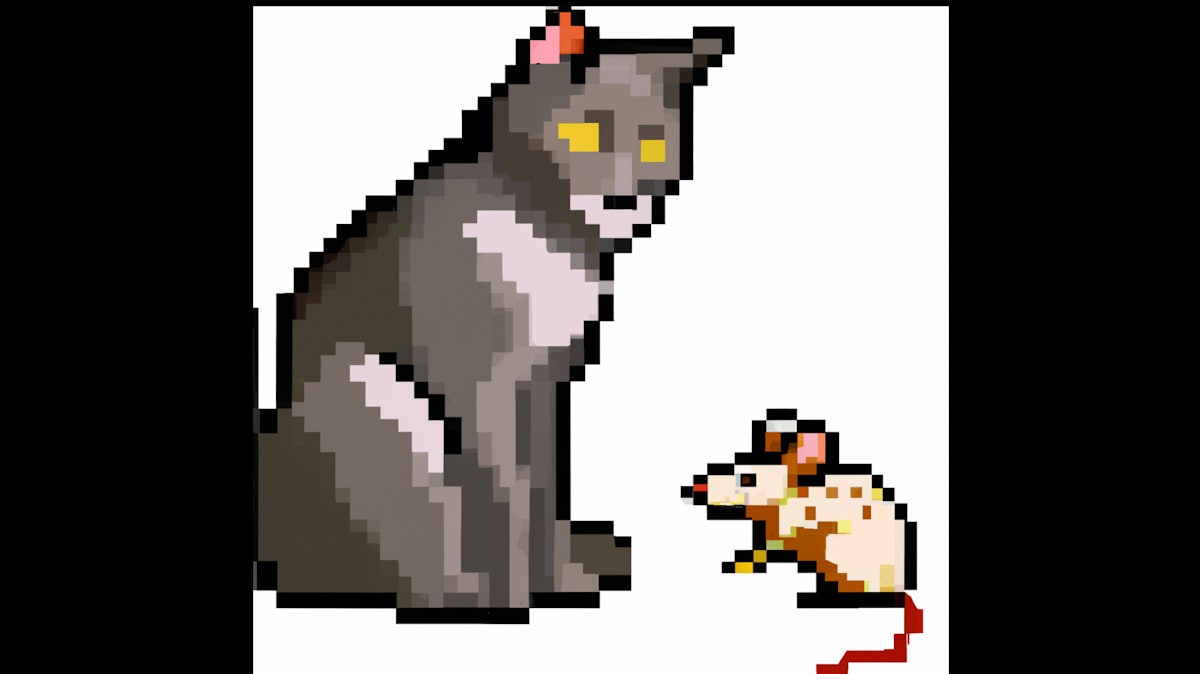
Pet owners’ demands for ancestral diets for pets rarely go all the way to whole animals, much less live prey. Otherwise, the market for whole rodents and rabbits would have expanded from pet reptiles to cats and dogs. Various barriers prevent the widespread adoption of whole-prey diets for dogs and cats.
First, feeding a live rodent to a cat or dog seems cruel to many. Even reptile owners have largely moved to frozen and thawed prey items, except for picky pythons who won’t strike on a jiggling mouse corpse. A live rodent can be dangerous to the predator as well since a meek mouse can still bite and scratch.
Furthermore, mammals tend to be messier eaters than snakes. A corn snake or ball python can chug a rat whole. Dogs and cats aren’t so fastidious. Dog and cat owners may want to feel like they are providing their pets with a “biologically appropriate” diet like that of a wild cat or wolf. However, few people want to thaw a dead rat in their fridge, much less clean up the blood and scraps of flesh. Despite an “ick factor” that makes insect protein seem mainstream, some pet owners do choose to give their cats whole prey.
Research on whole prey diets for cats
Those cats may gain from their owners’ strong stomachs. Scientists have found potential gastrointestinal health benefits to feeding whole animals to cats.
“Whether this effect is caused by the chemical or physical nature of whole prey is unknown,” wrote a team of researchers in the British Journal of Nutrition. In other words, does the mouse need to be intact, or can ground rodents provide the same gut health advantages?
To test the effects of whole prey on pet cats, researchers conducted an experiment using 15 domestic cats. After eating an extruded diet for ten days, the cats ate either minced mice or whole mice for 19 days. The scientists collected and analyzed the cats urine and feces to determine the effect of food structure on digestibility, urinary function, intestinal microbiomes and intestinal fermentation products.
When comparing minced to whole mice diets, the scientists didn’t observe any effect on large intestinal fermentation. Total short-chain fatty acids, branched-chain fatty acid, and most biogenic amine concentrations were the same with both ground and whole mice. However, the initial shift from extruded diets to mice did influence cats’ digestive systems. The cats’ gut microbial community composition shifted from carbohydrate-eating Prevotellaceae to protein-preferring Fusobacteriaceae microbes, with a reduced fecal acetic to propionic acid ratio.
“The results of this study indicate that food structure within a whole-prey diet is less important than the overall diet type, with major shifts in the microbiome and decrease in potentially harmful fermentation products when diet changes from extruded to mice,” the scientists wrote. “This urges for careful consideration of the consequences of prey-based diets for gut health in cats.”
Whole prey diets for cats
In other studies, scientists observed that whole prey diets can fulfill cats’ nutritional requirements, perhaps more effectively than processed foods. Additionally, whole prey diets may promote dental health, since cats have to chew on bones and cartilage, reducing the risk of dental issues like tartar buildup.
However, whole prey has drawbacks too, especially the potential for pathogen transmission, including parasites and bacteria, from the prey to the cat or to pet owners. Economically, whole prey can be costly for pet owners and distributors. Preserving and storing a whole rodent is much more difficult than dry or canned products.
While whole-prey diets may offer health benefits, they also present challenges related to pathogen transmission, supply chains and cost.
